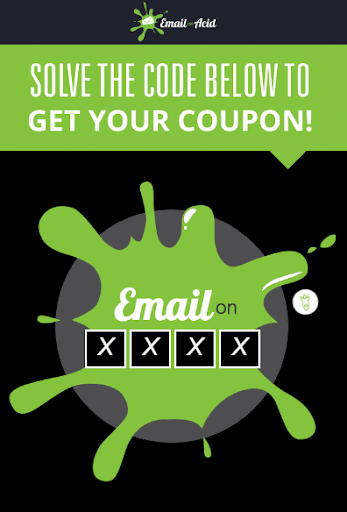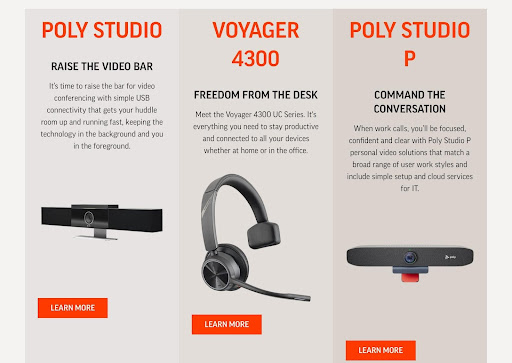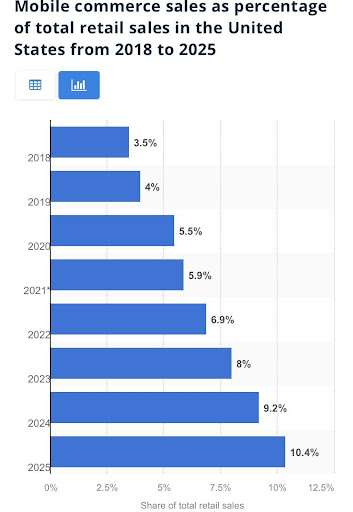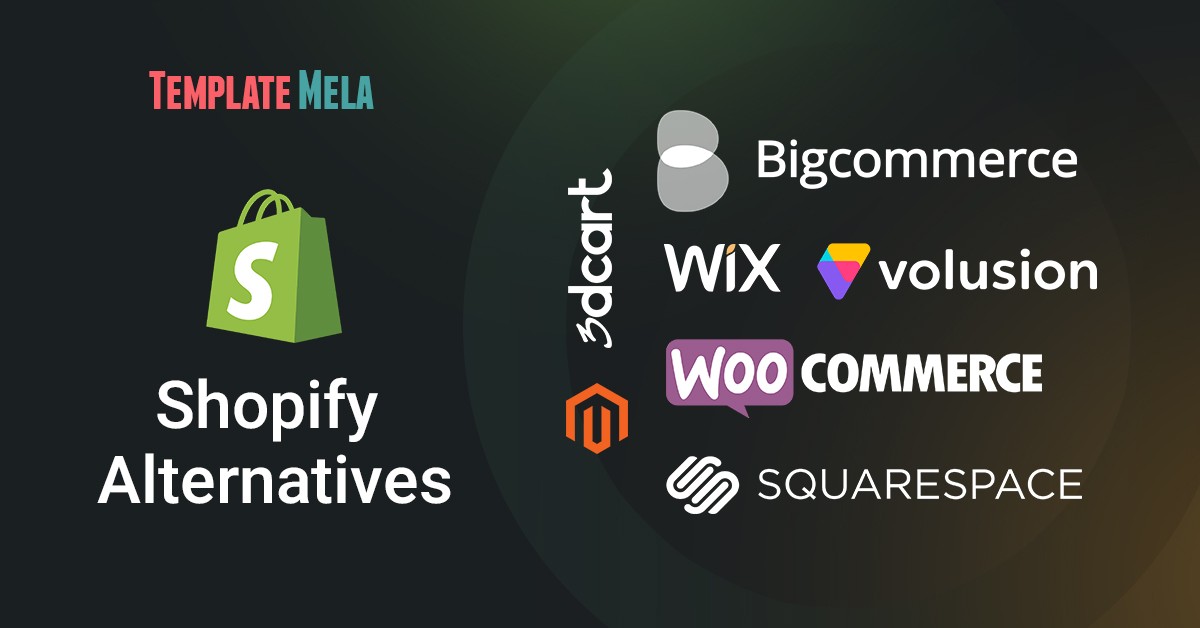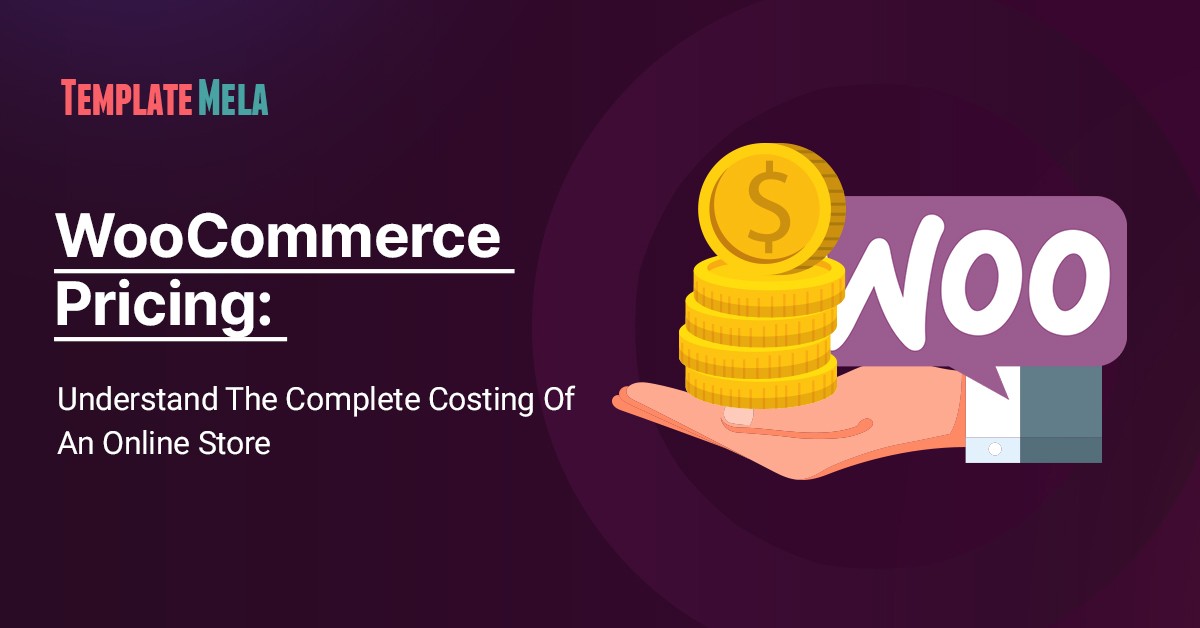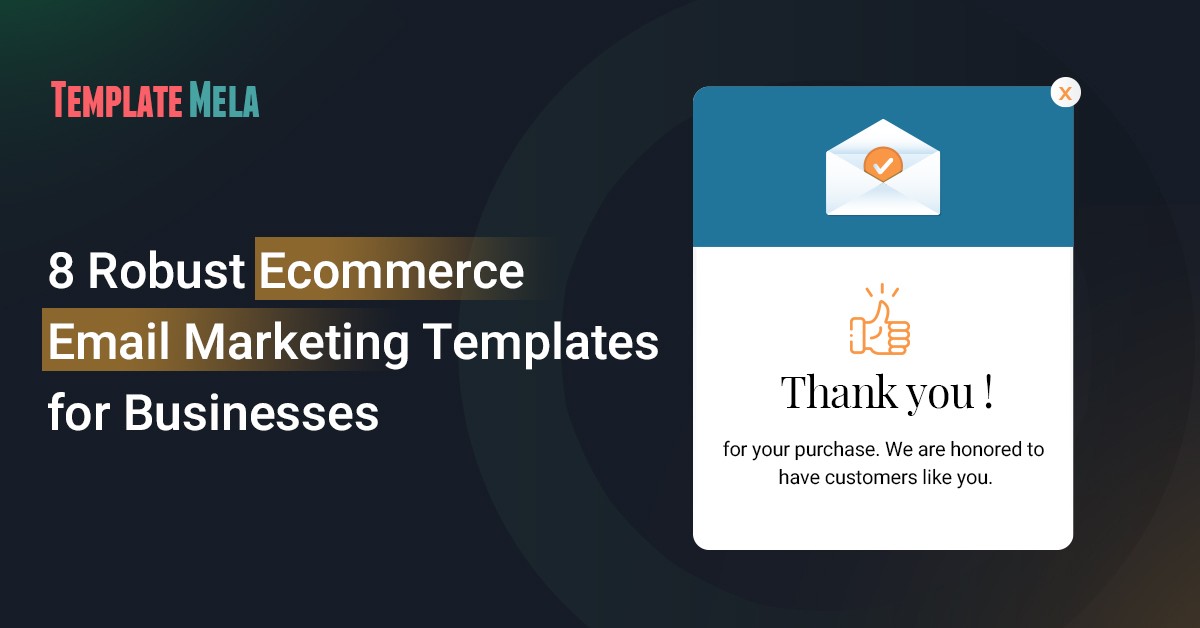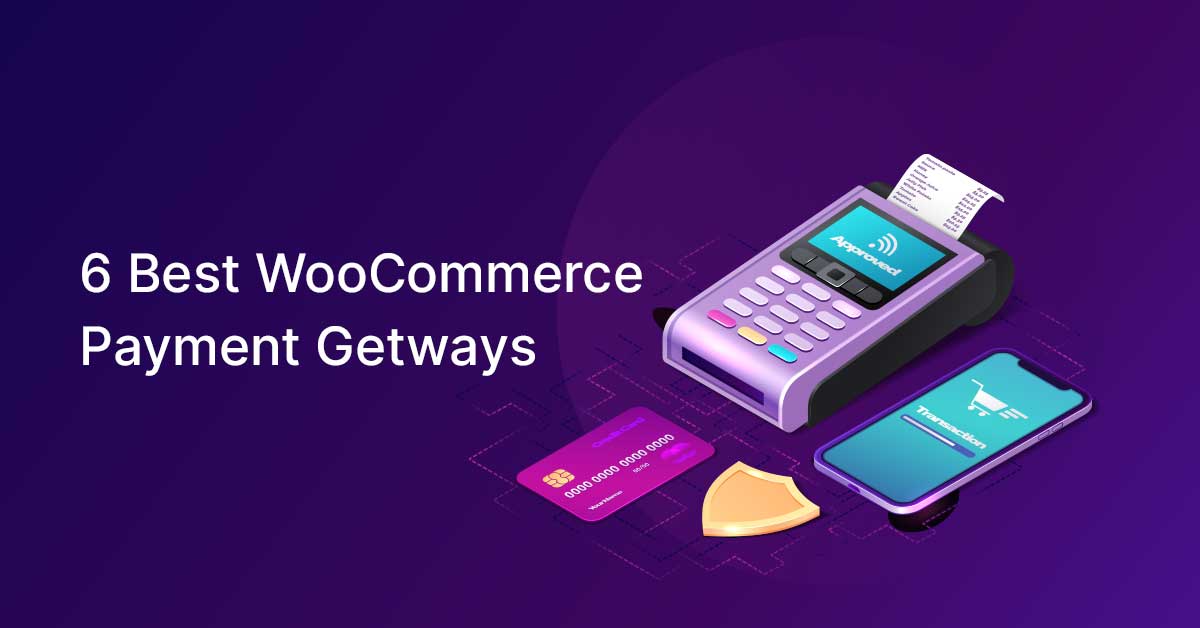Ecommerce Marketing 101: 10 Strategies & Tips to Drive Sales
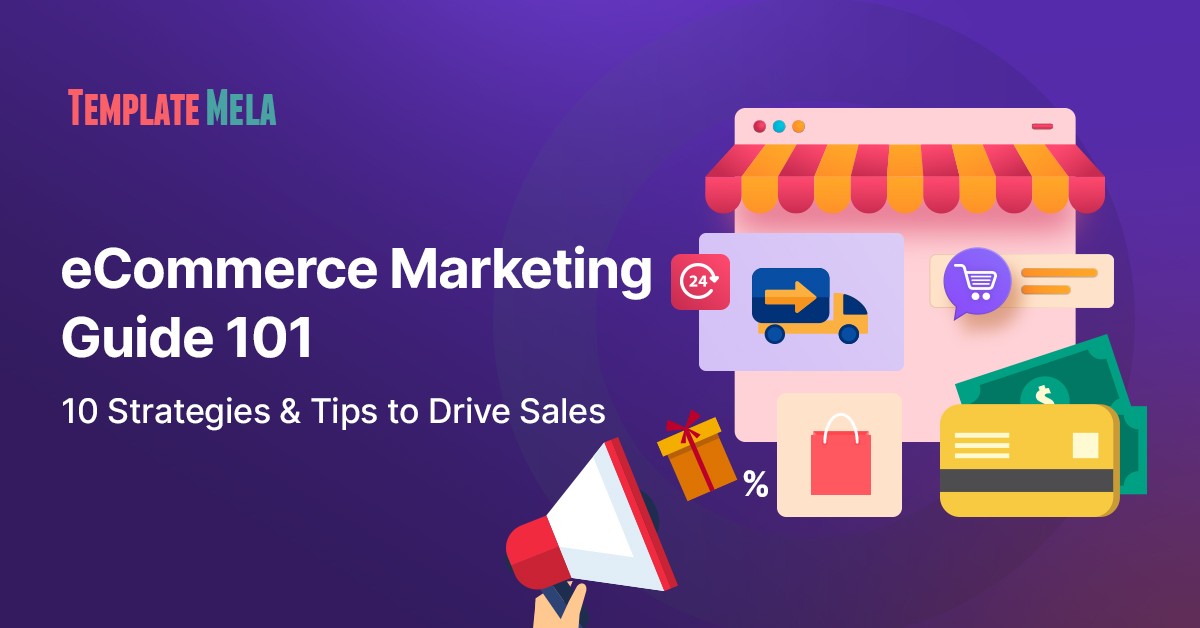
The eCommerce business model is flourishing nowadays. After the pandemic, people’s shopping behavior has completely changed around the globe.
According to a survey named COVID-19 and E-commerce, more than half of the respondents admitted shopping online after the pandemic.
That means people are ready to shop online today. Now, all you have to do is direct them towards your eCommerce store, and your sales will go up in no time.
eCommerce marketing is the best solution here to build your brand awareness, drive customers and finally, increase your sales.
All this might seem simple on paper, but when you go out and start competing with other eCommerce brands to grab users’ attention, your basic eCommerce marketing will not work.
You have to come up with a trendy eCommerce marketing strategy to drive more sales, period.
This post will walk you through the most effective eCommerce marketing strategies that can grow your sales in 2022. Let’s dig in.
10 Top eCommerce Marketing Strategies to Boost Sales in 2022
Do you want people to buy from your eCommerce store, leaving Amazon, Shopify, or other big brands? Then, you need a powerful marketing strategy with sales enablement to capture, nurture and convert leads to sales.
But it is not easy to build a winning eCommerce marketing strategy when so many marketing methods are available at your disposal.
Thus, you should create a Google Sheet of all the leading eCommerce marketing strategies and monitor their ROI to select the best one.
Below we have analyzed various eCommerce brands’ approaches and shortlisted the best 10 strategies that will drive more sales in 2022.
1. ECommerce search engine optimization
Foremost, put your eCommerce SEO optimization plan in order. That’s because 81% of buyers’ journeys start online at least 79 days before making a purchase.
SEO optimization will help you appear on the top of search engines. It will allow you to make people aware of your brand and enter them into your sales funnel.
Usually, people think SEO means researching the relevant keywords and embedding them into your content. But in reality, SEO is a deeper concept and broadly divided into two categories:
- On-page SEO: All the search engines optimization activities you perform on your website are called on-page SEO, such as adding keywords to product descriptions, blogs, etc.
- Off-page SEO: SEO operations that you perform out of your site like guest blogging, social media marketing, and so on.
By keeping your eCommerce SEO sharp, you can easily capture potential customers’ interest.
Therefore, you should use tools like Google Keywords Planner to find high-performing keywords and then, in product descriptions, blogs, and other ways, smartly embed them into your website.
There are Various eCommerce tools that accelerate business.
2. Personalize your email marketing campaigns
Email marketing might be old, but it is a gold marketing strategy. As of 2021, 4.03 billion people already use emails, which is way more than the collective Instagram and Facebook user base.
But it is also true that 35% of emails remain unread or unopened. Therefore, if you don’t want your marketing emails to end up in the trash folder, you have to personalize your email marketing campaigns.
Leveraging account-based marketing, you can easily understand your individual email accounts and accordingly send them emails.
When you send emails based on the user’s interest, there’s a high chance that they will read and take action on your emails.
Using account-based marketing data, you can compose a variety of emails, such as:
- Cart abandon emails: If a person has added something to the cart but hasn’t purchased it, a little email nudge can help here.
- Interest-based emails: You can send emails related to similar products based on the products a user has already purchased from your store. Usually, it is easy to generate sales from your old customers rather than new ones.
- Upsells and cross-sells emails: Send offer emails post-purchase to your customers.
- Win back emails: If your certain accounts aren’t active for some time, you can send emails to reactivate them in your sales funnel.
- Reward emails: To your regular customers, you can send special reward emails to thank them.
Using customers’ interest data, you can create a variety of emails such as gamified eCommerce email marketing campaigns. For instance, this is a simple reward email by Email on Acid to giveaway holiday coupons to their customers.
Pro tip: To create gamified emails, you can use popular classic online games like Soltiaire, jigsaw puzzles that are commonly known by people, customizable, and easy to integrate into your campaigns.
3. Make your eCommerce store user-friendly
Your eCommerce website is your shop and salesperson. Your website is the final destination to generate sales. Thus, your eCommerce website has to be visually appealing and engaging enough to compel visitors to buy.
You have to design your eCommerce website layout in a way that even a new visitor can easily navigate around your website. Your website design also plays a crucial role in SEO optimization.
Here are a few eCommerce websites designing tips that you can follow to create a user-friendly website:
- Choose your eCommerce website development platform after doing complete market research. Some of the popular eCommerce platforms are Shopify, Bagisto, WooCommerce, WordPress, and many others.
- The website layout should be easy to navigate, clear CTA, have neat visuals, etc.
- Optimize your website speed because no one has time to wait for your website to load.
- Offer multiple payment gateways.
- Simplify the order placement process as many people abandon carts due to the complex ordering process.
There are many other things you can do to make your eCommerce website more user-friendly.
You can also use account-based marketing to personalize your eCommerce store depending upon your users’ preferences.
You can take ideas from the Polycom website to better optimize your eCommerce website. Today, there won’t be any meeting room where you won’t find Polycom products.
Despite being a big brand, they kept their website design neat and simple. Even a person with zero knowledge about the brand can easily understand their products.
4. Streamline your Instagram marketing
In general, social media marketing is an important part of your eCommerce marketing. But out of all social media channels, Instagram is extremely useful for B2B and B2C eCommerce brands to connect, engage and sell products.
Instagram being the visual-driven platform, provides better opportunities to attract customers. A study concluded that 96% of shoppers are attracted to the visual component of merchandise.
On Instagram, eCommerce owners get multiple opportunities to visually attract users and sell their commodities through interactive captions, such as:
- You can share different visual presentations of your products with customers
- Frequently post content on your Instagram page to attract new customers
- Share Reels and Stories to keep your customers engaged
- Using the Instagram Shop feature, you can directly land users on the product purchase page
- Interact with potential customers via comments and direct messages
- Run Instagram ads targeted specific users based on age, location, and other demographic factors
- Analyze your customers using Instagram Analytical tools and so much more.
- Use an Instagram growth service to grow your account faster.
Instagram marketing is today explored by all small and big eCommerce companies. Here eJuices, a wholesale B2B brand, is beautifully targeting millennials on Instagram.
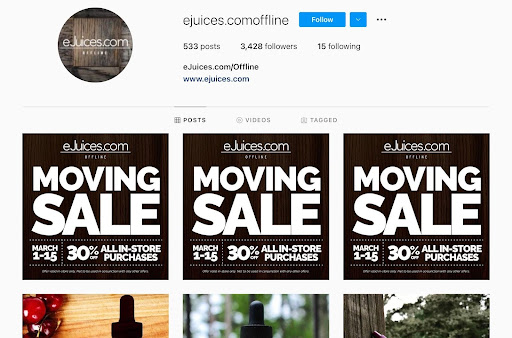
The way they have shared their products images on Instagram – is quite sufficient to generate sales. Additionally, they have built a big community on Instagram that helps them to stay connected to their customers.
5. Harness Google shopping ads
If you have the budget to run paid ads, Google shopping ads are the perfect way to popup in top search results. In fact, the average Google ads conversion rate was 3.75% across all industries in 2020. For eCommerce alone, it was around 2.81%.
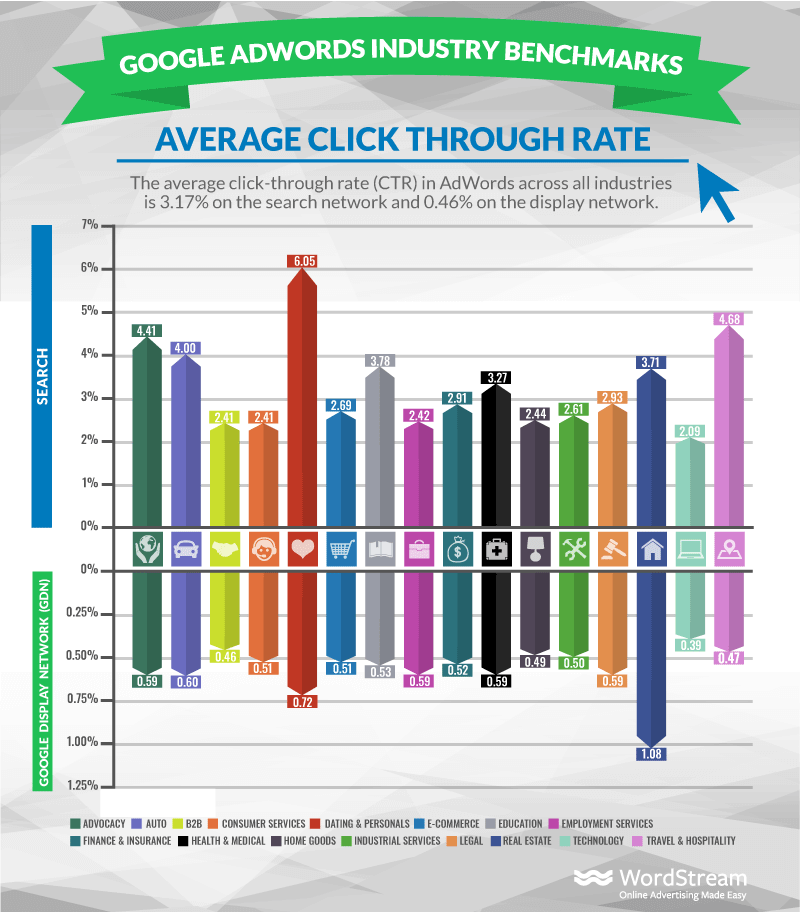
So, today if you are a new eCommerce startup trying to compete with big brands, ads are the best option for you to drive more sales. The ads allow you to target the relevant keywords and make your products appear on the top of Google search.
For example, when I searched for “Best commercial printers for small business” on Google, the following ads appeared on the top:
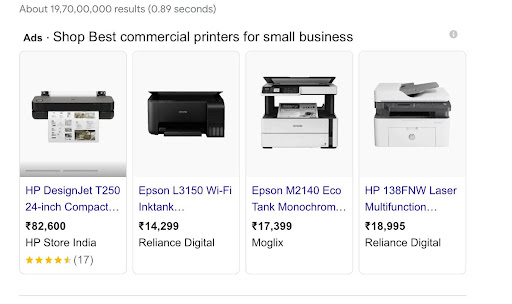
6. Use live chatbots
Besides social media and emails, live chatbots are the new way to interact with your customers. You can add a live chat feature on your website that will allow your customers to know more information about your products.
Additionally, live chat will help you better understand your customers’ needs and preferences.
Today, eCommerce companies use live chatbots for several purposes, such as improving user experience, mapping buyer’s journey, etc.
For example, Alive & Kickin’ Pizza Crust, the pizza crust, and dough supplier company, use chatbots to promote their content library.
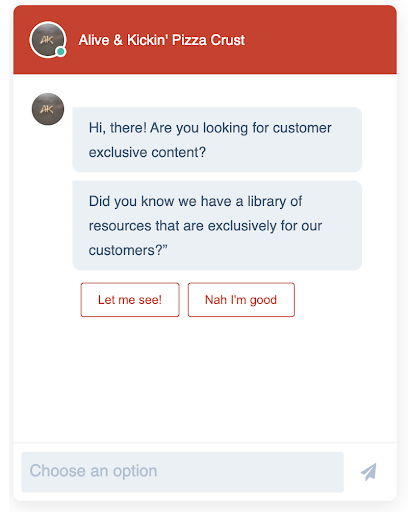
Despite being a B2B eCommerce company, Alive & Kickin’ Pizza Crust invests a lot in blogs. So, here chatbot helps them to drive sales by encouraging visitors to read their blogs.
7. Focus on user-generated content
User-generated content, aka UGC eCommerce marketing strategy, is both economic and result-driven. When your customers make content for you, it will reduce your burden of content planning and creation.
Additionally, UGC helps to social proof your business, which is important to drive more sales. That’s because 84% of people trust online reviews as much as they trust their friends’ opinions.
Therefore, make sure to include a variety of user-generated content in your eCommerce marketing funnel, such as:
- Publish customers reviews and testimonials on your website
- Record customer video testimonials and post on YouTube
- Request your customers to tag your brand on social media
- You can ask your customers to make product tutorials, etc.
8. Target micro-influencers
Influencers marketing is yet another great tactic to social proof your eCommerce brand. But the traditional celebrity influencers won’t work for you anymore.
It is found that 92% of millennials trust social media influencers more than big celebrities.
Therefore, you need to find micro-influencers in your industry to promote your sales. These small influencers have a tight-knitted community that will buy quickly when you target influencers in the right way.
The entire success of this eCommerce marketing strategy depends upon the quality of influencers. Here are a few factors that you can consult while selecting influencers:
- Find influencers in only your niche
- Analyze tone and language that influencers use; it shouldn’t be something that your business doesn’t support
- Check engagement on the influencer’s post
- Understand the reach of an influencer
- Constantly monitor your growth after collaborating with a new influencer, etc.
9. Optimise your content for voice search
According to eMarketer, 40% of all internet users in the US use voice search. That means you have to optimize your content based on voice search to appear in top search results.
Since content is the main part of embedding keywords and targeting SEO on your website thus, you have to write your website so that voice bots can easily understand your content.
To write content for voice-based searches, you have to reshuffle your content writing strategy as follows:
- Analyze your customers’ location and language accent to write your content. For example, to target a US audience, use words like a gas, diaper or lift. In contrast, UK audiences will use words like petrol, nappies, or elevators to search.
- Pay more attention to conversational long-tail keywords.
- Use brevity, relevancy, and context in your voice-based searchable content.
- Use schema makeup to tell search engines about your website’s context.
- Make use of knowledge base software to add a FAQ section on your website because voice-based searches are primarily question-oriented like “how,” “why,” “when,” etc.”
10. Mobile ready your eCommerce store
Mobile commerce is the next milestone in the eCommerce sector. It is projected that by 2025, 10% of online sales will be conducted via mobile. As of 2021, 5.9% of sales are already happening on mobiles.
So, you have two options here – either you can create a dedicated eCommerce mobile app or optimize your current website for mobile screen size.
To mobile-ready your eCommerce store, focus on a few things:
- Make sure your website visuals and content fit a mobile screen
- Create a simple navigation system for mobile users
- Keep your buttons, and other CTA links bigger enough to tap with a finger
- Focus on mobile website’s load speed
- Responsive checkout process for mobile users
- Optimize images and videos for the mobile processors
- Remove invasive pop-ups and unnecessary ads
- Reduce your content size and so on.
Customize Your eCommerce Marketing Strategy Today!
ECommerce marketing has many layers – from eCommerce SEO to social media marketing. But you have to first analyze which eCommerce marketing strategy better works for your business and audience. And accordingly, you have to build your eCommerce marketing plan.
That’s because if social media marketing has worked for other eCommerce brands, there’s a chance it won’t work for you. Therefore, don’t blindly follow popular eCommerce marketing strategies used by other brands.
You should implement all the powerful 10 eCommerce marketing strategies discussed in this post and analyze their ROI. Based on it, select the marketing strategies that bring more sales your way.
So, go and customize your eCommerce marketing strategy asap.
